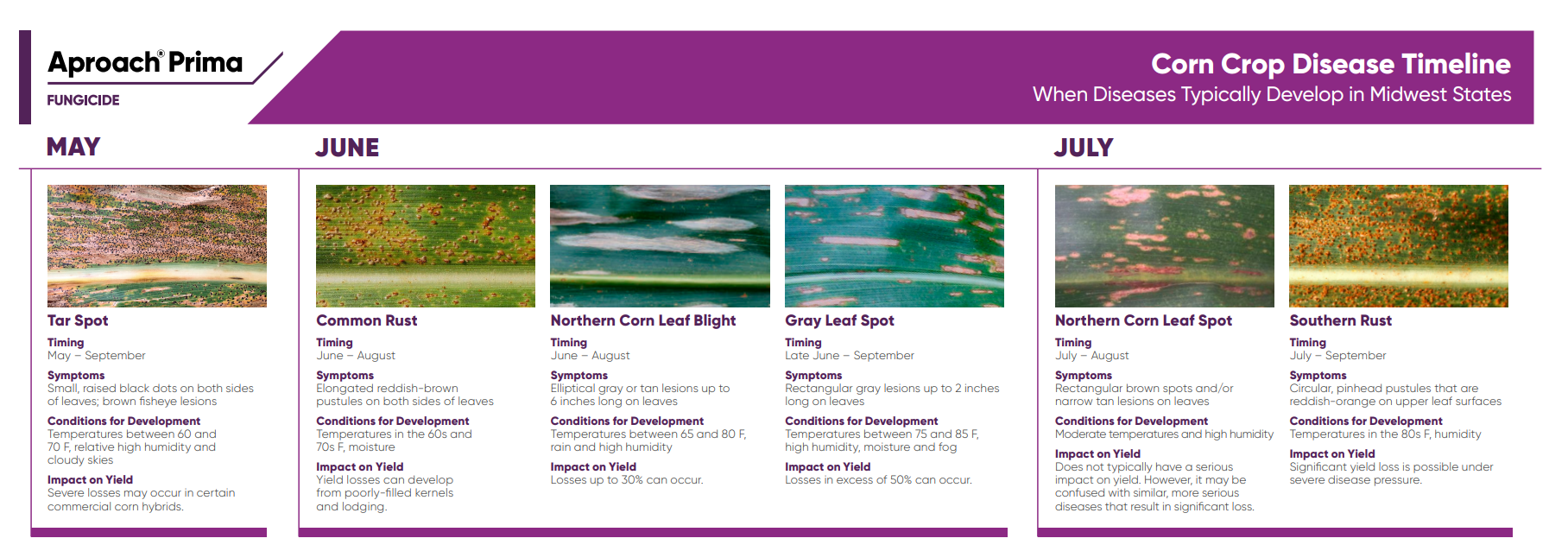
As we head into the summer months, now is a good time to start thinking about crop disease. There are several diseases that can show up in Midwest cornfields and severely limit yield if left untreated.
Corn Diseases to Watch For
This timeline gives an overview of six common corn diseases, their symptoms, conditions for development and what months you might expect to find them while scouting. A couple of diseases to call out are northern corn leaf blight and tar spot.
Northern corn leaf blight can cause more than 30% yield loss
if left to flourish under the right conditions. Tar spot can cause significant yield losses as well, with certain commercial hybrids being more susceptible than others.
Tar spot is also particularly troubling, because it’s still relatively new to the Midwest. So, knowing what to watch for will be key. Early symptoms of the disease look like spots of tar on corn leaves, which develop black ovular or circular lesions. The texture of the leaves become bumpy and uneven. Tar spot spreads from the lowest leaves to the upper leaves, leaf sheathes and, eventually, the husks of the developing ears.
It’s imperative to keep your eyes peeled for tar spot, northern corn leaf blight and other diseases this year to protect your yield.
Controlling Corn Diseases
It’s a good idea to scout for diseases regularly, roughly every two weeks, as
some infections can start and spread very quickly.
Depending on the disease, symptoms may first appear close to the ground, or higher up on the corn plant. So, you’ll want to make sure to look over entire plants including stems, leaves and ears.
When it comes to controlling disease, applying a foliar fungicide to corn preventively is a great way to avoid yield loss. Aproach® fungicide is excellent for controlling northern corn leaf blight and gray leaf spot. Aproach® Prima fungicide is very effective against tar spot, northern corn leaf spot, common rust and southern rust. Ideal timing for preventive fungicide applications is typically between late June and late July, depending on the season and your location.
For an even closer look at how to control these and other crop diseases, download the Disease ID Guide from Corteva Agriscience. This guide gives detailed information on 14 of the most common corn and soybean diseases found in the Midwest and how to keep them from robbing your yield.
Aproach® and Aproach® Prima are not registered for sale or use in all states. Contact your state pesticide regulatory agency to determine if a product is registered for sale or use in your state. Always read and follow label directions.
The More You Grow
Find expert insights on agronomics, crop protection, farm operations and more.
Get Your Disease ID Guide
Learn the timing, signs and treatment for common crop diseases with the Corn & Soybean Disease ID Guide.
